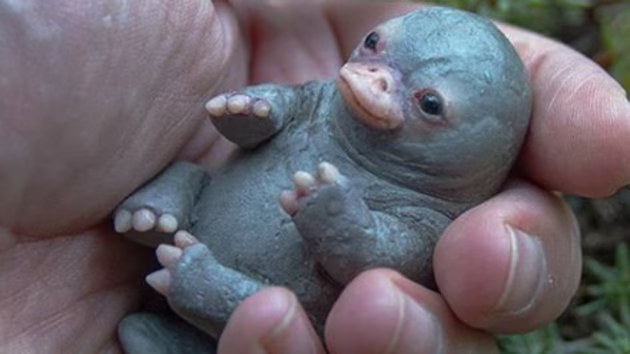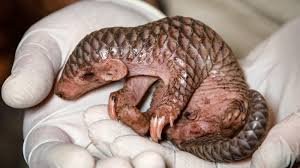
ants face close up
Introduction: Seeing the Ant Differently
To most people, an ant is just a tiny insect crawling across a picnic table or marching in line along the ground. But when viewed up close—especially under a microscope—an ant’s face reveals a stunning level of complexity. With their armored heads, intricate mandibles, compound eyes, and sensitive antennae, ants are marvels of biological engineering. A close-up look at an ant’s face shows that there’s far more than meets the eye. This article explores the detailed anatomy, functions, and evolutionary significance of the ant’s face, and how this tiny creature’s facial features help it thrive in colonies, fight enemies, and navigate its world.
Anatomy of an Ant’s Face
An ant’s face is part of its head capsule, a tough, rigid exoskeleton that protects internal organs and houses sensory organs and mouthparts. The face includes mandibles (jaws), antennae, compound eyes, clypeus, and the frons (forehead). Each component has a specific role in survival and contributes to the ant’s complex behavior. At close range, the ant’s head can appear alien—textured, armored, and covered in fine sensory hairs. Unlike human faces, which are mostly expressive and soft, an ant’s face is designed for functionality and durability.
Mandibles: Tools, Weapons, and Scissors
One of the most prominent features of an ant’s face is its mandibles—a pair of powerful, movable jaws that can grip, cut, crush, and carry. These mandibles are not just simple biting tools; they are multi-functional appendages used for building nests, feeding larvae, defending the colony, and hunting prey. In some ant species, the mandibles can open 180 degrees and snap shut like a bear trap, moving faster than a blink of an eye. In trap-jaw ants, for instance, the mandibles close at 140 to 230 kilometers per hour, making them one of the fastest-moving body parts in the animal kingdom. Close-up photos of ant mandibles show saw-like edges, sharp tips, and in some species, serrated ridges, perfectly adapted for their roles.
Antennae: The Ant’s Sensory Antennas
Another crucial part of an ant’s face is its antennae—the long, jointed feelers that emerge from the front of the head. Antennae serve as the primary sensory organs and are far more sensitive than they appear. Ants use their antennae to smell, taste, touch, and communicate. The antennae are constantly moving, sampling the environment and picking up pheromones, which are chemical signals used for navigation, alarm responses, and colony coordination. The antennae are elbowed, giving them a distinctive shape, and consist of multiple segments, each lined with chemoreceptors. When viewed under magnification, these segments appear to have fine bristles, giving the antennae a textured surface ideal for detecting even the faintest signals. You can read more about how ants use chemical communication at Smithsonian.
Compound Eyes: A Different Way of Seeing
Ants do not see the world the way humans do. Their compound eyes, located on each side of the head, are made up of hundreds to thousands of ommatidia, or tiny visual units. These lens-like structures give ants a mosaic-like image of their surroundings. While compound eyes are excellent for detecting movement and changes in light, they do not provide sharp focus or color detail. However, some ants that forage in daylight—like the weaver ant—have larger eyes and better visual acuity than nocturnal or subterranean species, which may have reduced eyes or none at all. In a face close-up, the compound eyes resemble multi-faceted domes, almost like insect-style sunglasses, adapted to their specific environment and lifestyle.
The Clypeus and Frons: Less Known but Vital
Between the ant’s eyes and above the mandibles lies the clypeus, a flat or slightly convex plate that forms part of the ant’s “face.” This region may not be as dynamic as the mandibles or antennae, but it helps define the shape of the head and often has distinct markings or hairs used for identification among species. Above the clypeus is the frons, which is sometimes referred to as the ant’s forehead. In close-up views, both of these structures may have distinct surface textures, grooves, and minute sensory hairs, contributing to how ants detect air movement, vibration, or even touch from colony members.
Facial Hairs and Sensilla: The Hidden Sensors
When an ant’s face is viewed through an electron microscope, what appears to be a hard, smooth surface at a distance is revealed to be covered in hairs—called sensilla. These tiny structures function as mechanoreceptors, thermoreceptors, and chemoreceptors, giving the ant detailed information about its environment. The distribution and density of sensilla differ between castes and species. For example, soldier ants might have more robust sensory hairs for detecting intruders, while worker ants have finer hairs for delicate tasks like feeding larvae. This dense network of sensors makes the ant’s face a fully equipped control panel—one that’s constantly collecting and processing information.
Variation Among Species and Castes
The appearance of an ant’s face can vary significantly depending on its species, caste, and function in the colony. Soldier ants often have larger mandibles and more armored facial features for combat, while queen ants have more delicate features, used primarily for reproduction. Worker ants, who perform most of the daily tasks, have a balance of structure and function, with strong jaws, well-developed antennae, and sensory adaptations. In close-up photos, differences in texture, scale structure, eye size, and jaw shape become clear, showing how evolution tailors each caste’s face to its specific job in the colony.
How Facial Features Aid in Communication
While ants don’t use facial expressions like humans, their facial structures still play a role in communication. The position of the mandibles, the angle of the antennae, and even tactile movements of the head can convey meaning. For example, ants may tap antennae, lock mandibles, or stroke another ant’s face to exchange information. Much of their communication, however, is tied to chemical cues rather than visual ones. Still, their face-to-face contact during grooming, trophallaxis (mouth-to-mouth feeding), or antennal drumming shows how their faces are active tools in colony cohesion.
Facial Armor and Defense
Because ants often engage in aggressive interactions with other colonies or predators, their heads—and especially their faces—are built for defense. The cuticle (exoskeleton) on an ant’s head is usually thicker and more reinforced than on the rest of the body. This protects the central nervous system, muscle attachments, and sensory organs. In some species, like the Turtle Ant, the flattened, armored head is even used as a door to block intruders from entering the nest. In close-up images, these defensive adaptations look like natural helmets, a testament to the ant’s need to survive in a competitive world.
Interesting Facts About the Ant’s Face
- Ants have no eyelids—they rely on resting in stillness rather than sleeping in the human sense
- Their jaws can exert force many times their body weight, especially in soldier species
- The ant’s antennae are so sensitive, they can detect chemicals in concentrations as low as a few parts per billion
- The mandibles of some ants “click” shut, producing sounds that can also function as warnings
- Scientists use face shape and texture as important traits in identifying new ant species
Why the Ant’s Face Matters
Beyond its alien appearance, the ant’s face is a window into its lifestyle. The shape and features of the face reflect the ecological niche, evolutionary history, and role within the colony. In many ways, the ant’s face functions as a toolkit, a sensor array, and a combat system rolled into one. The next time you see an ant on the sidewalk, remember: its face is not just a tiny dot—it’s a complex structure evolved for survival, strategy, and super-sensing.
Conclusion: An Alien World in Miniature
The ant’s face close-up is a perfect example of how nature combines function and form at a microscopic scale. Far from being simple or boring, the face of an ant is engineered for survival, packed with sensory tools, and tailored for the role each ant plays. From its powerful mandibles to its sensitive antennae and multi-lensed eyes, the ant’s facial structure shows just how sophisticated these tiny creatures truly are. In a world measured in millimeters, every ridge, bristle, and joint serves a purpose. And while we may overlook them at normal scale, the close-up world of ants reveals a realm of armor, precision, and biological beauty.






